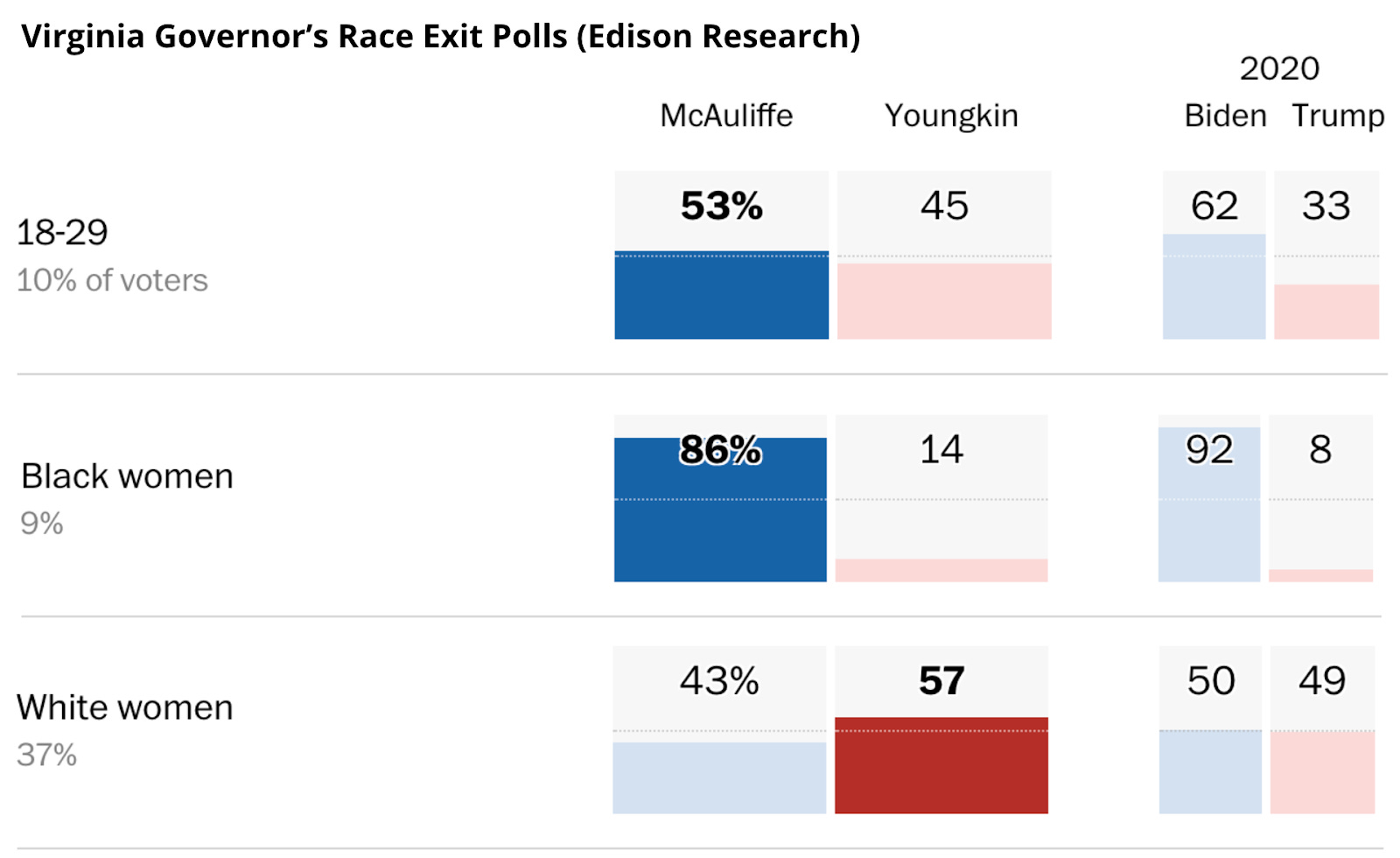
Local Candidates Will Save the Democratic Party…If We Let Them
Lessons from the 2021 Election Results
It is no secret that Democrats have had a rough few weeks.
The national press has been playing politics covering the Infrastructure & Build Back Better bills, Joe Biden’s approval rating is down, and Democrats had some stunning losses (and close calls) in this year's elections in Virginia, New Jersey, and elsewhere.
Luckily, much of this has to do with the current circumstances in the country. People are frustrated that COVID still lingers, inflation is causing headaches for families, and supply chain issues might ruin Santa’s trip around the globe.
While these are all very real issues that need addressing, they are also issues that mainly exist at this exact moment. With Biden pushing to ease the congestion as U.S. ports, the passage of the largest investment in infrastructure since the interstate highway system in 1956, and vaccine mandates working, there is light at the end of the tunnel. If Biden can wrangle the massive government apparatus, the country just might be in a much different and better place in time for the 2022 Midterms.
That’s the good news.
The bad news is that the Democratic Party has some work and self-reflection to do in the meantime.
A Stagnant Democrat Message & Machine
The Virginia election results were a deep reminder that while the days are progressing, the Democratic Party’s issues are the same as they were on November 6, 2020.
My very first newsletter was about the failings of Democratic messaging and campaign strategies. As I said then, the policies that Democrats stand for are insanely popular, but Democrats can’t seem to win at the same level. That’s because Democrats have done such a poor job of branding themselves and let the Republican Party and national press define them instead.
Putting aside the very real headwinds with a right-wing propaganda machine infecting the national narrative and rampant voter suppression, there is real work that Democrats can do to pull themselves out of an inevitable loss in 2022.
Many Democrats have lost the thread because they are so focused on day-to-day political jockeying and their own self-interest (here’s looking at you senior Senator in AZ). The surest way to improve the Democratic brand is to build an empathetic and inclusive brand through which our core values can shine through and tie directly to popular policies that Americans are desperate for.
We are the party of accessible and affordable healthcare
We are the party of a clean and livable planet
We are the party of democracy for all
We are the party of basic human rights & dignity
We are the party of an economy that works for everyone
We are the party that protects the most marginalized
These are universally popular beliefs whether you live in an urban or rural area, no matter your skin tone, gender, sexuality, etc.
I won’t beat a dead horse because everything I wrote in February still stands, but I advise all Democrats to keep a central focus on the core values of the party, repeat that message early & often, and shout the wins from the rooftops.
A Party That Reflects Its Voters
While messaging is important, there was another more glaring concern that is bubbling to the surface particularly in the Virginia gubernatorial race.
Since the Virginia elections, there have been too many “takes” on why Democrats lost, but let me offer mine anyways.
The Democratic Party needs to recognize that its candidates must reflect its voters.
Gone are the days where the only “electable” politician was a handsome (sometimes debatably) white man with a wholesome family of 2.5 children. In fact, the opposite appears to be the case in this year's elections.
The two candidates who had the biggest struggles of the night were Terry McAullife who lost in a state that Biden won by 10 points and Phil Murphy in New Jersey who barely eked out a win where Biden won by 15 points. Both are white men within the Democratic Party establishment.

While Terry McAuliffe saw depressed voter turnout from black women, young people, and suburban moms, other more diverse candidates fared much better.
The reason? Diverse down-ballot candidates ran races that reflected the values and needs of their constituents. They humanized their campaigns and used their platform to build enthusiasm around policies that have tangible benefits to their voters.
Call me radical, but that seems like an obvious winning strategy.

Take a look at three diverse candidates who won their races last week.
- Michelle Wu was elected the first female and POC governor in Boston running on a platform of tackling the racial wealth gap and implementing climate policies at the city level.
- Danica Roem, a trans woman, beat her white male counterpart by over 10 points by focusing on the local issues in her area like transportation improvements and school lunch reforms.
- And my personal favorite (I may be biased as I worked on her campaign), Michelle Maldonado won as a first-time candidate championing an economy that works for everyone.
Let me stipulate that this is an overgeneralization, but the trend lines have been clear since at least 2018 that progressive candidates who represent and speak to their constituents at their level tend to win elections.
In reality, the 2021 election results were a loss for the Democratic Party establishment, not Democrats. The multiracial coalition in the Democratic party fared just fine.
As soon as the party recognizes that a diverse slate of candidates can win, the better off they will be in the Midterms.
“We are ready to meet this moment. We are ready to become a Boston for everyone. We’re ready to be a Boston that doesn’t push people out, but welcomes all who call our city home”
- Michelle Wu
the roots of change media ecosystem Newsletter
Join the newsletter to receive the latest updates in your inbox.




